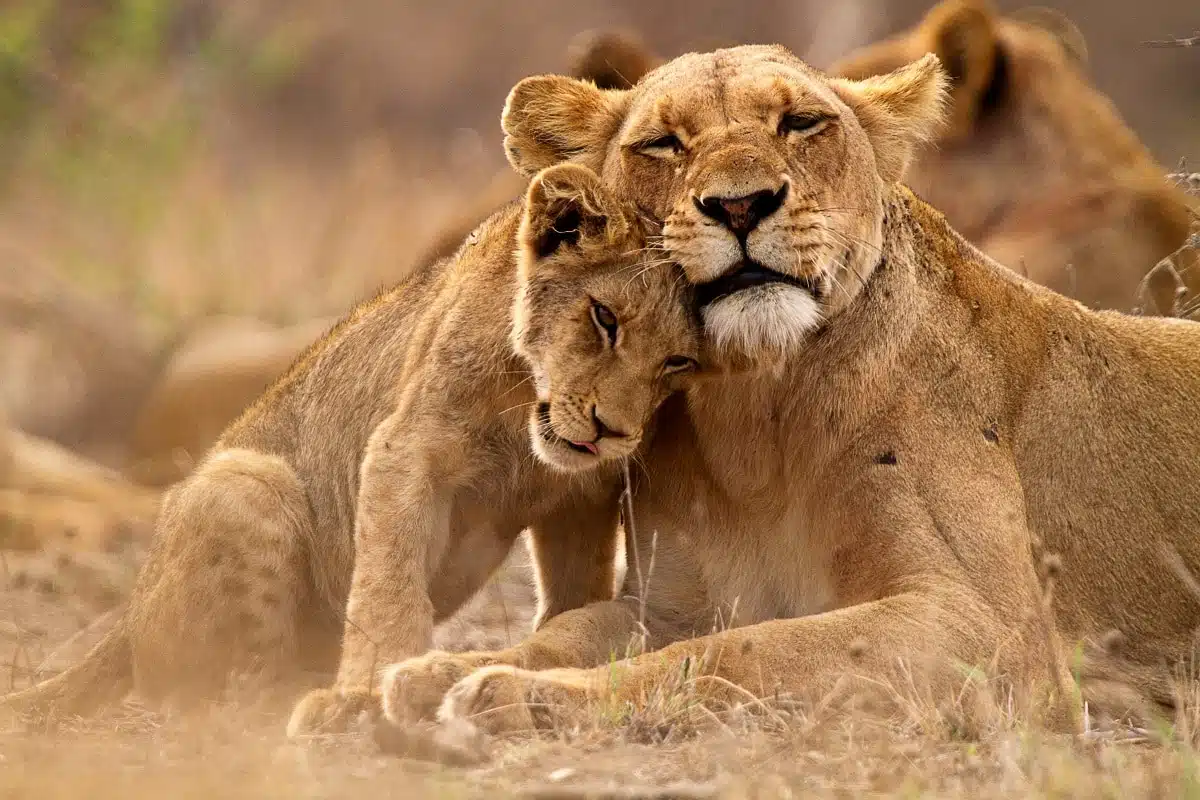Africa’s heartlands, a landscape of savannahs, forests, and deserts, are the last strongholds of the majestic lion, a symbol of strength and courage. However, the continent’s lion populations face threats from habitat loss, human-wildlife conflict, and poaching, leading to a significant decline in their numbers. Travelers can learn about and contribute to lion conservation in these immersive programs. This guide aims to connect individuals with the efforts to protect these magnificent creatures and their habitats, offering a deeper understanding of the challenges and solutions in lion conservation. Through participation in these programs, travelers gain unparalleled insight into the life of lions and contribute to the preservation of Africa’s wildlife heritage.
1. Maasai Mara, Kenya – The Mara Lion Project
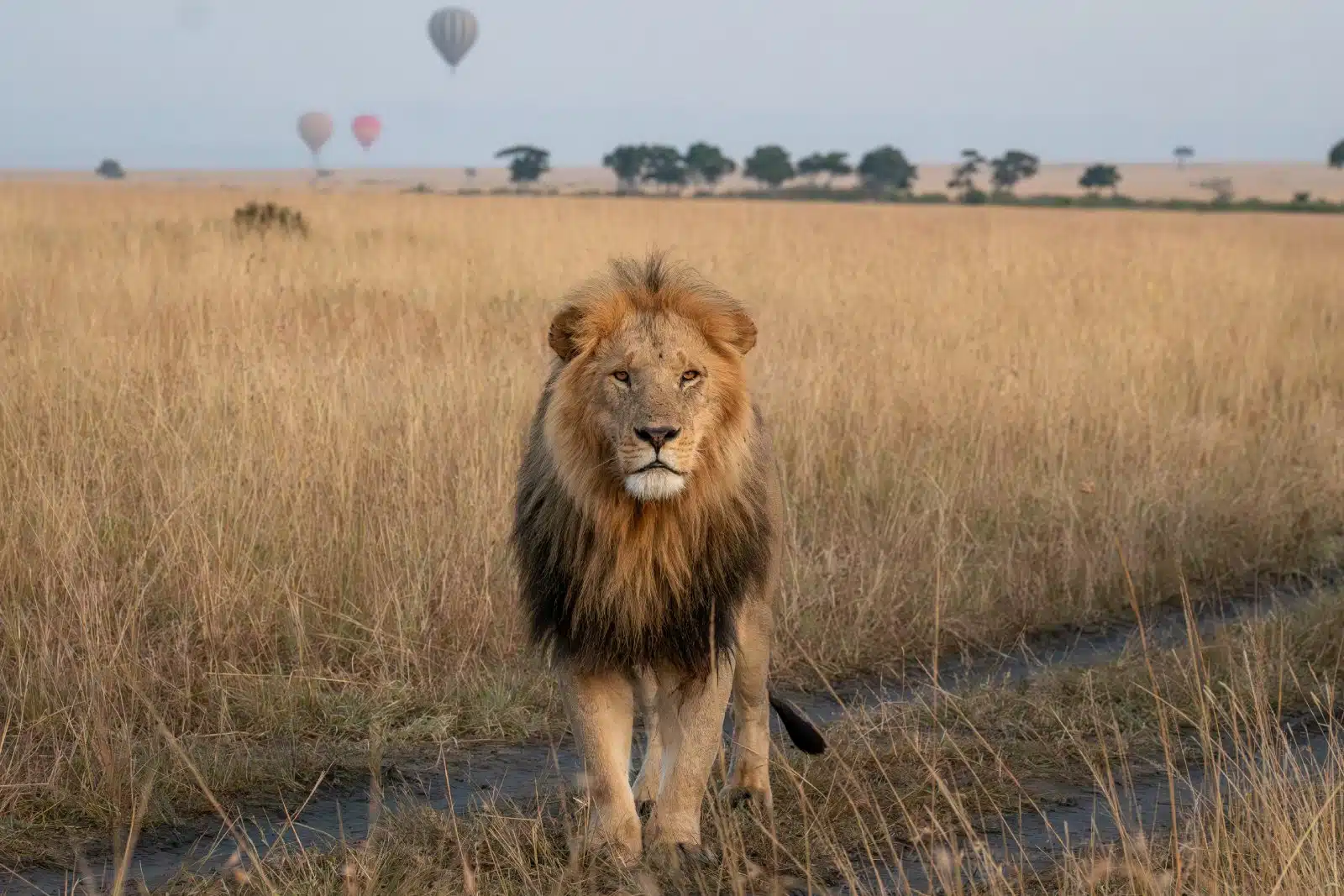
Image Credit: Shutterstock / Bestte
Kenya’s Maasai Mara National Reserve is renowned for its spectacular wildlife, including one of Africa’s most significant lion populations. The Mara Lion Project, a conservation initiative within the reserve, focuses on research and community engagement to ensure the future of lions in the region. Visitors can participate in tracking expeditions, where they learn to identify individual lions and understand their behavior and the threats they face. The project also works closely with local Maasai communities to mitigate human-lion conflicts, promoting coexistence through education and sustainable practices.
Insider’s Tip: Join a night patrol with local rangers for a unique opportunity to see conservation in action and learn about the nocturnal behaviors of lions.
When to Travel: The dry seasons offer the best wildlife viewing opportunities from July to October and December to February.
How to Get There: Fly into Nairobi’s Jomo Kenyatta International Airport and take a domestic flight to an airstrip near the Maasai Mara.
2. Okavango Delta, Botswana – Lion Conservation with the Botswana Predator Conservation Trust
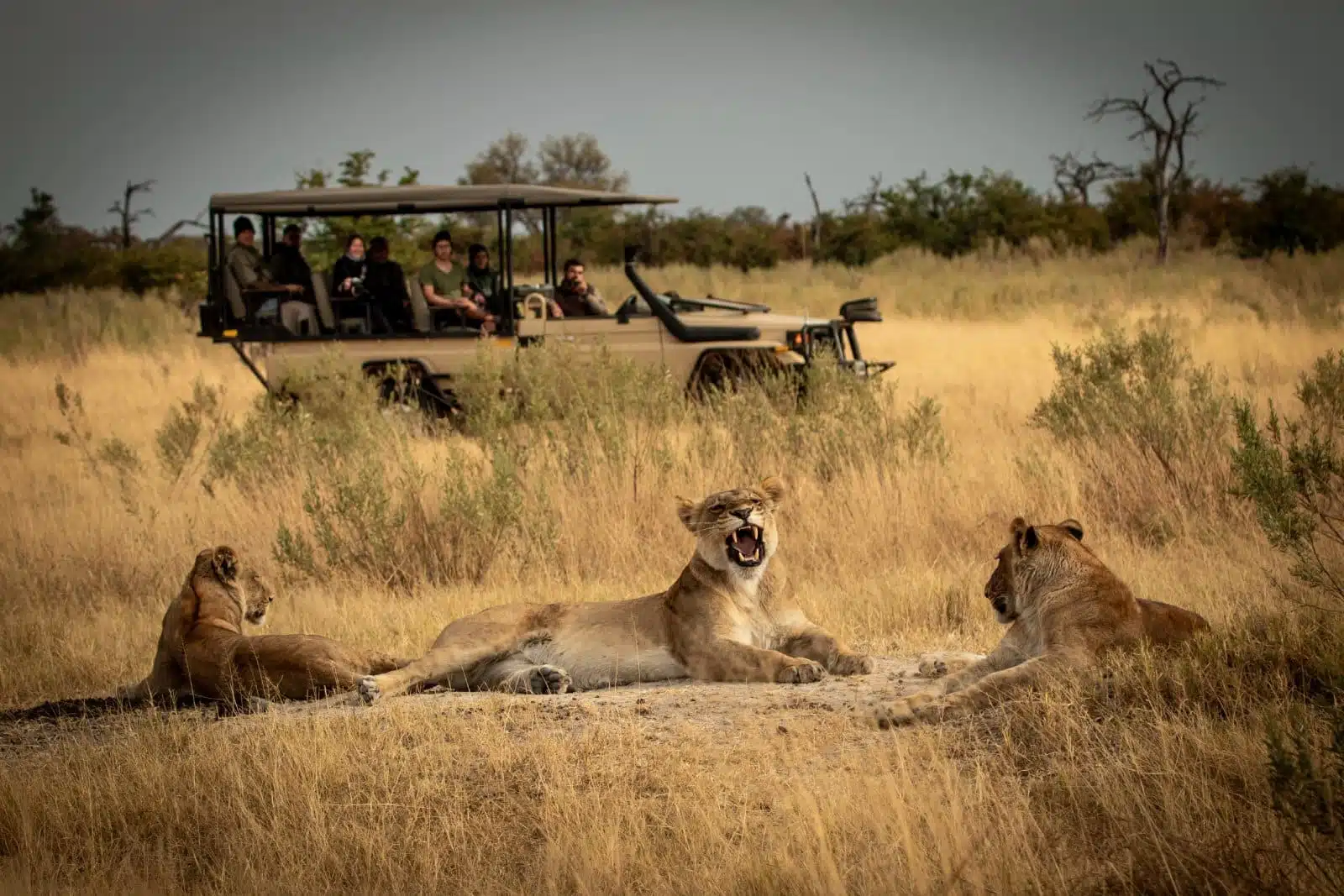
Image Credit: Shutterstock / rebekkastutz
The Okavango Delta, a UNESCO World Heritage site, is home to the Botswana Predator Conservation Trust, one of Africa’s longest-running conservation research initiatives. The trust includes studying lion movements and behaviors, developing bio-boundary projects to prevent lions from entering high-conflict areas, and educating communities. Visitors can engage in workshops, assist in data collection, and participate in community outreach programs, gaining hands-on experience in cutting-edge conservation techniques.
Insider’s Tip: Take part in a telemetry tracking session to experience the thrill of tracking lions using scientific equipment.
When to Travel: The best time to visit is during the dry season, from May to October, when wildlife congregates around water sources.
How to Get There: Access is typically through Maun Airport, with charter flights available to various camps within the Okavango Delta.
3. Kruger National Park, South Africa – The Kruger Lion Management Program
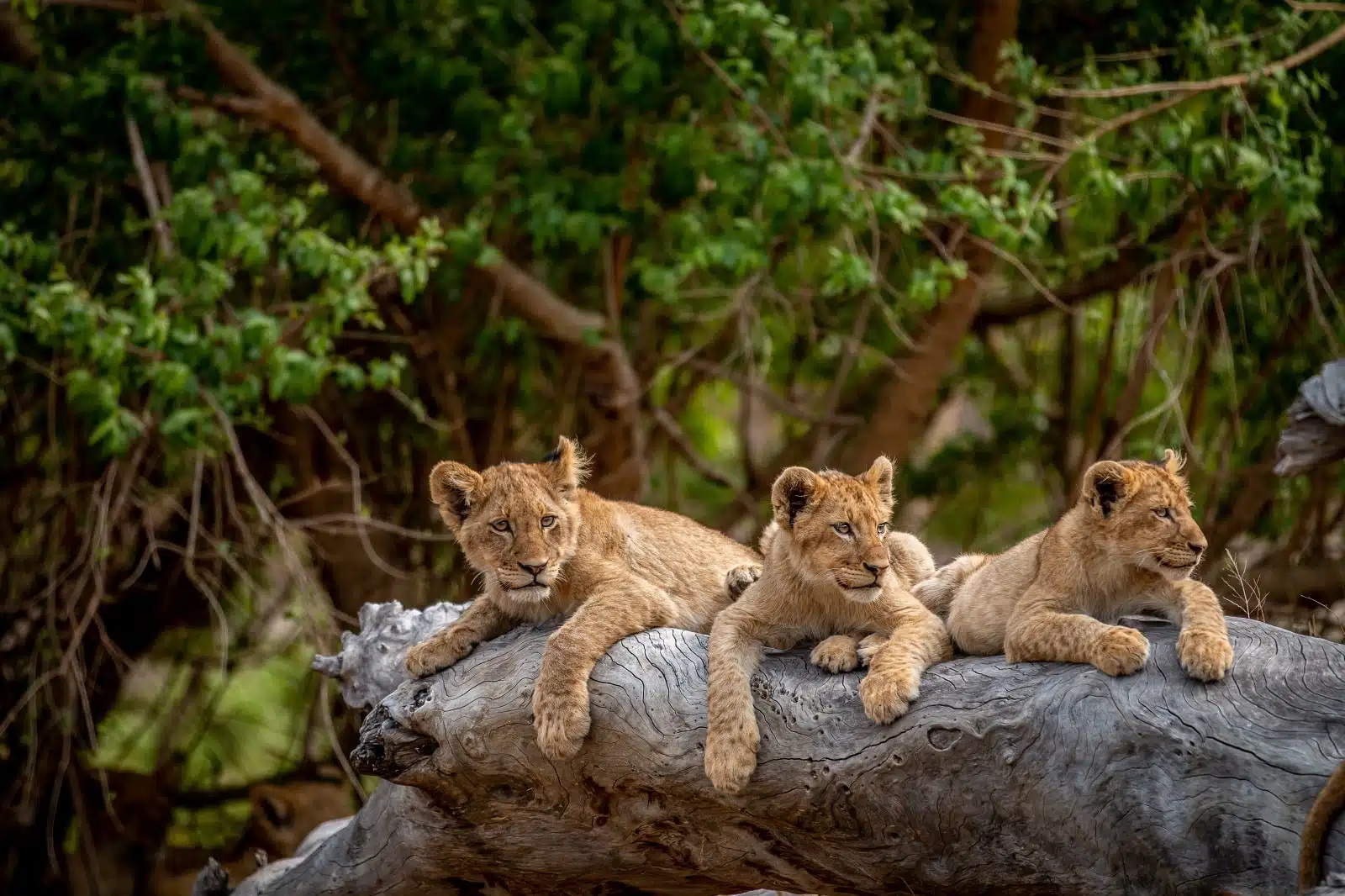
Image Credit: Shutterstock / Simon Eeman
Kruger National Park, one of Africa’s largest game reserves, hosts the Kruger Lion Management Program to monitor lion populations and genetics to ensure healthy diversity. The program involves tracking, health assessments, and managing human-lion conflicts at the park’s boundaries. Visitors can join conservation teams on drives and walks, learning about the challenges of managing lion populations in a fenced reserve and the importance of genetic diversity.
Insider’s Tip: Schedule a visit to the Endangered Species Centre within the park to learn about the broader conservation efforts for all species, including lions.
When to Travel: The cooler winter months from May to September are ideal for wildlife viewing.
How to Get There: Fly into Johannesburg and take a domestic flight to one of the airports near Kruger, such as Skukuza or Hoedspruit.
4. Serengeti National Park, Tanzania – Serengeti Lion Conservation
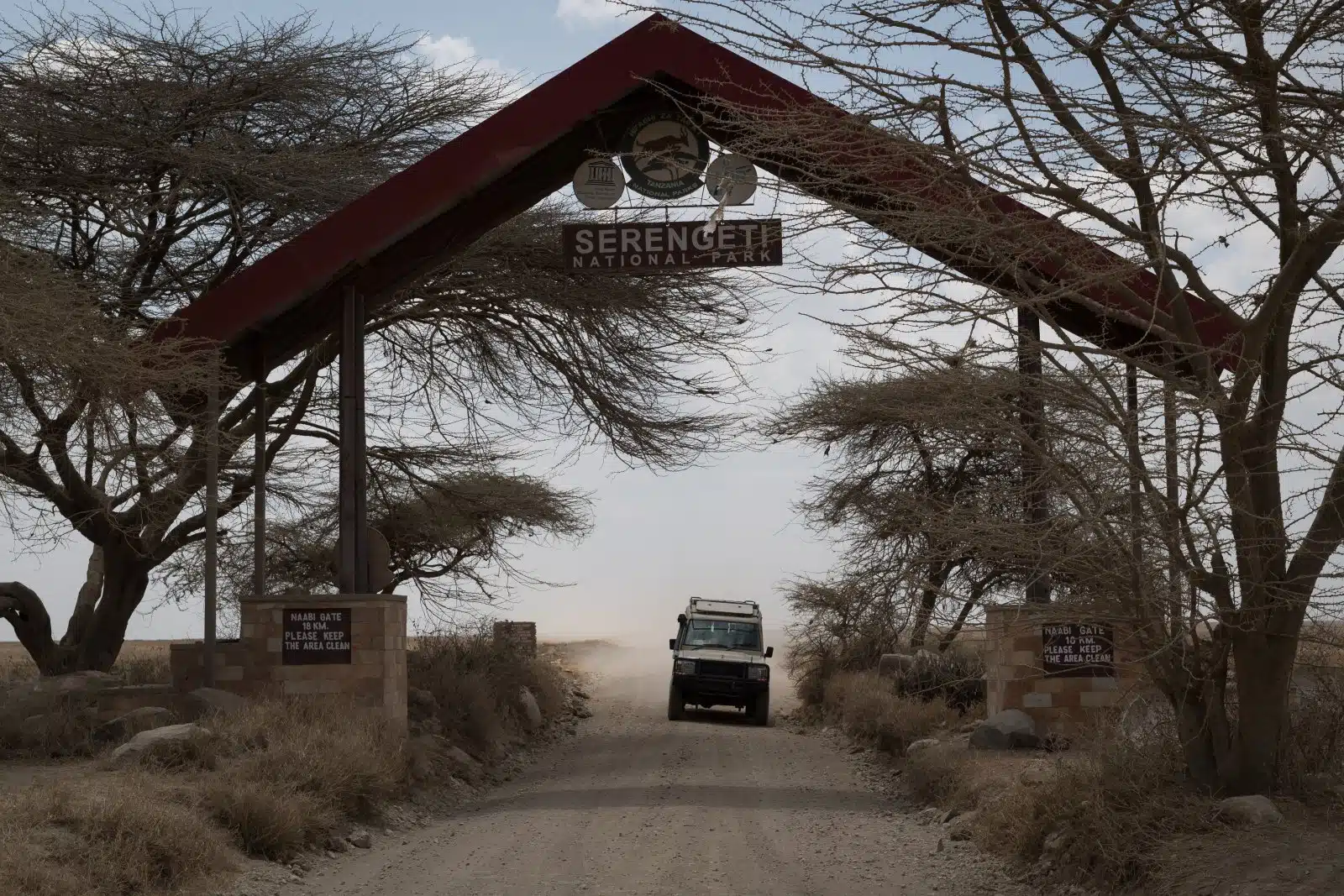
Image Credit: Shutterstock / timsimages.uk
The Serengeti National Park in Tanzania is iconic for its annual wildebeest migration and robust lion populations. The Serengeti Lion Conservation project focuses on protecting lions by mitigating human-wildlife conflict and conducting extensive research on lion health and behavior. Participation in this project offers an immersive experience in tracking, monitoring, and understanding the ecology of lions within the vast Serengeti ecosystem. The project also emphasizes community involvement and education as key components of conservation success.
Insider’s Tip: Engage in a cultural exchange with local communities to understand the significance of lions in local cultures and the impact of conservation from their perspective.
When to Travel: June to October is the best time for wildlife viewing, though the Serengeti offers year-round opportunities for lion sightings.
How to Get There: Fly to Kilimanjaro International Airport and take a domestic flight to an airstrip within the Serengeti.
5. Kafue National Park, Zambia – The Zambian Carnivore Programme
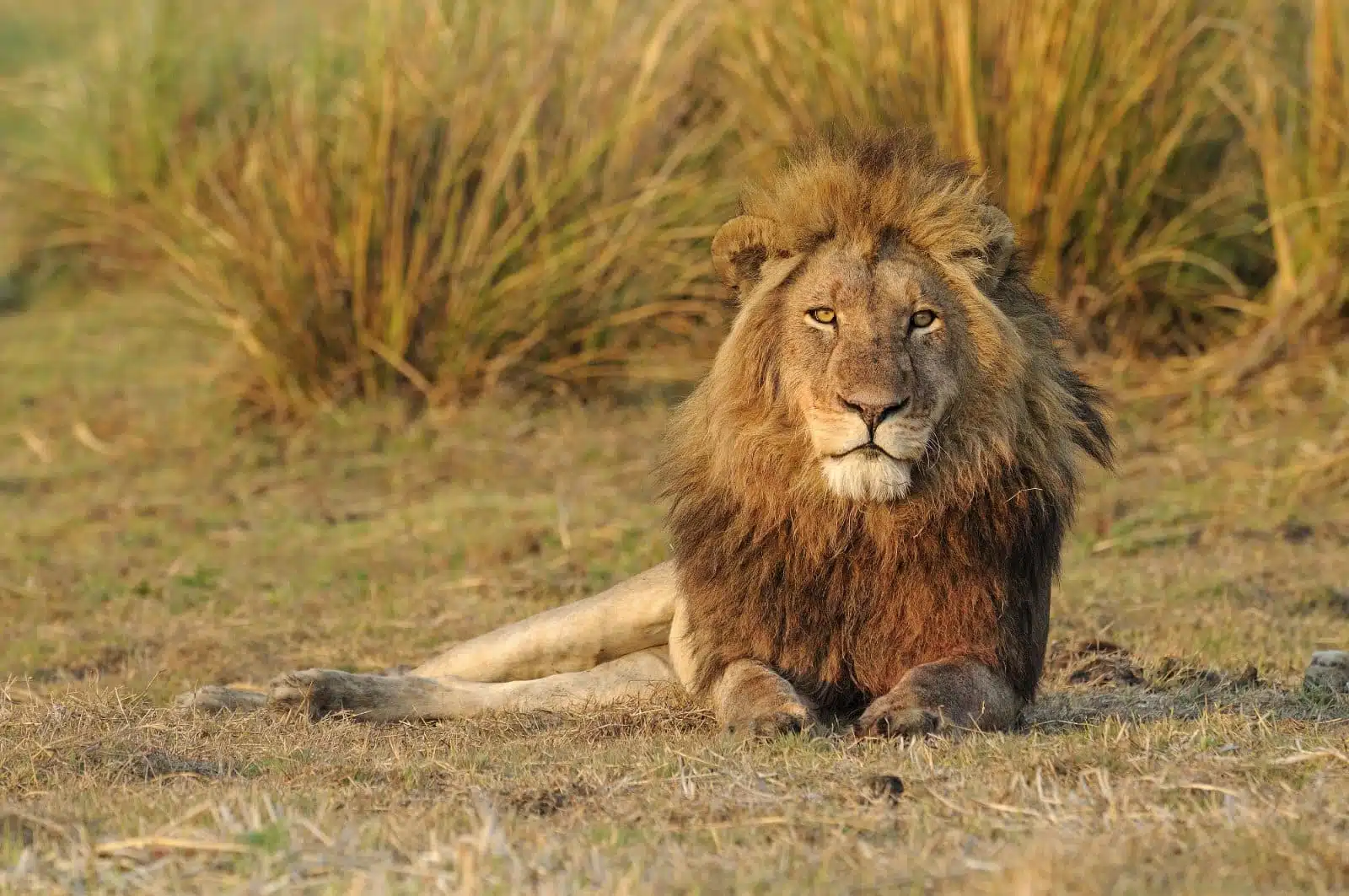
Image Credit: Shutterstock / Frantisek Staud
Kafue National Park, Zambia’s largest national park, is part of the Zambian Carnivore Programme, a comprehensive effort to conserve lions and other large carnivores across Zambia. The program includes anti-poaching efforts, research on carnivore populations, and community-based conservation projects. Visitors can join research teams in the field, experiencing the challenges and rewards of carnivore conservation in one of Africa’s most untouched wilderness areas.
Insider’s Tip: Participate in a community outreach program to see how conservation efforts are integrated with local livelihoods and education.
When to Travel: The dry season from June to October provides the best conditions for wildlife viewing and access to remote areas of the park.
How to Get There: Fly into Lusaka International Airport and take a charter flight or drive to Kafue National Park.
6. Queen Elizabeth National Park, Uganda – Lion Tracking Experience
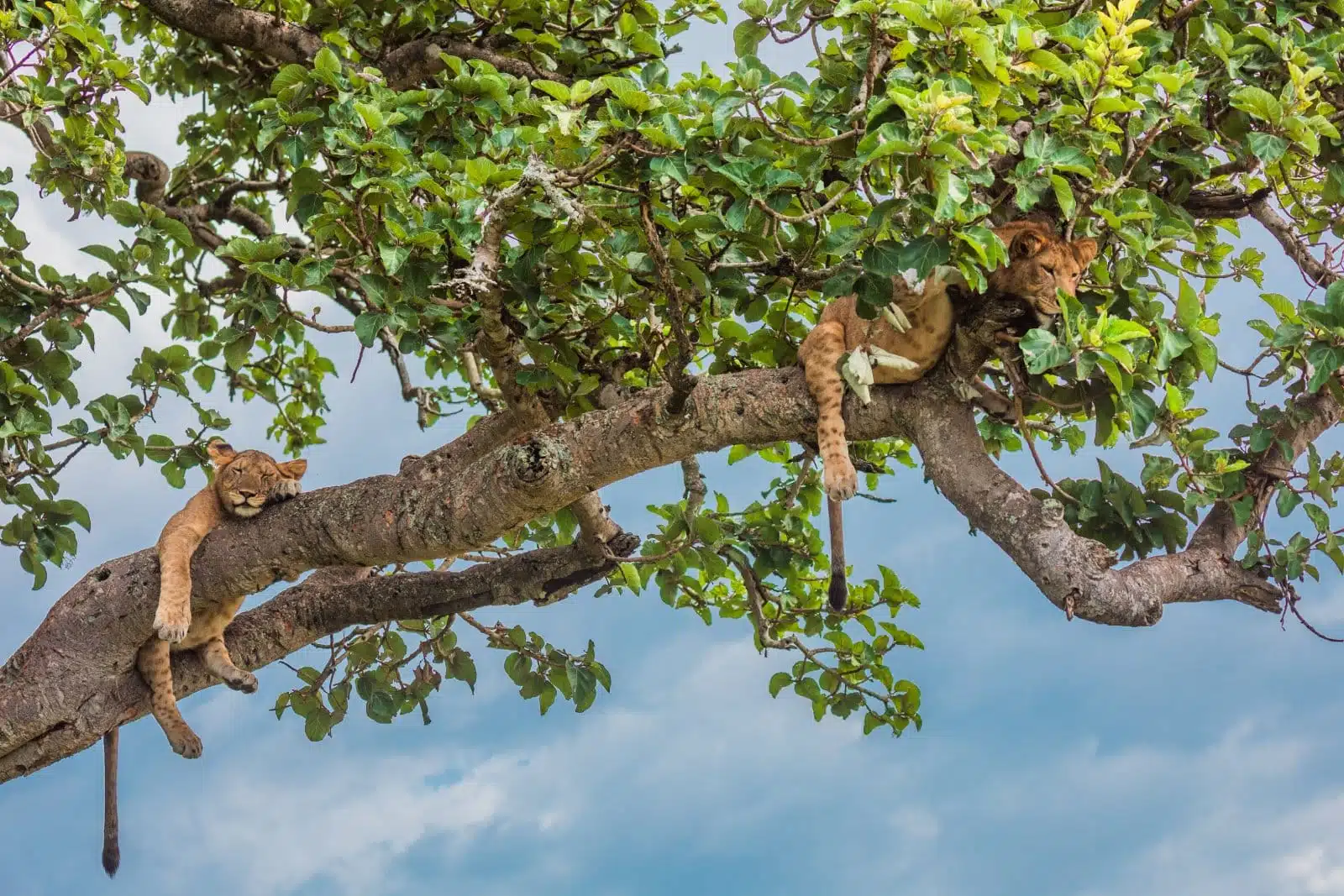
Image Credit: Shutterstock / Kim Paffen
Queen Elizabeth National Park in Uganda offers a unique lion tracking experience, where visitors can accompany researchers on expeditions to monitor the park’s famous tree-climbing lions. This program, part of a broader effort to conserve Uganda’s lions, provides insights into lion behavior, conservation challenges, and the importance of scientific research in protecting these big cats. The experience also highlights the park’s biodiversity and the critical role of lions in the ecosystem.
Insider’s Tip: Bring a good pair of binoculars and a camera with a zoom lens to capture the lions in their natural habitat, often lounging in the branches of fig trees.
When to Travel: The dry seasons offer the best wildlife viewing opportunities from January to February and June to July.
How to Get There: Fly into Entebbe International Airport and take a domestic flight or a scenic drive to Queen Elizabeth National Park.
7. Hwange National Park, Zimbabwe – Painted Dog Conservation
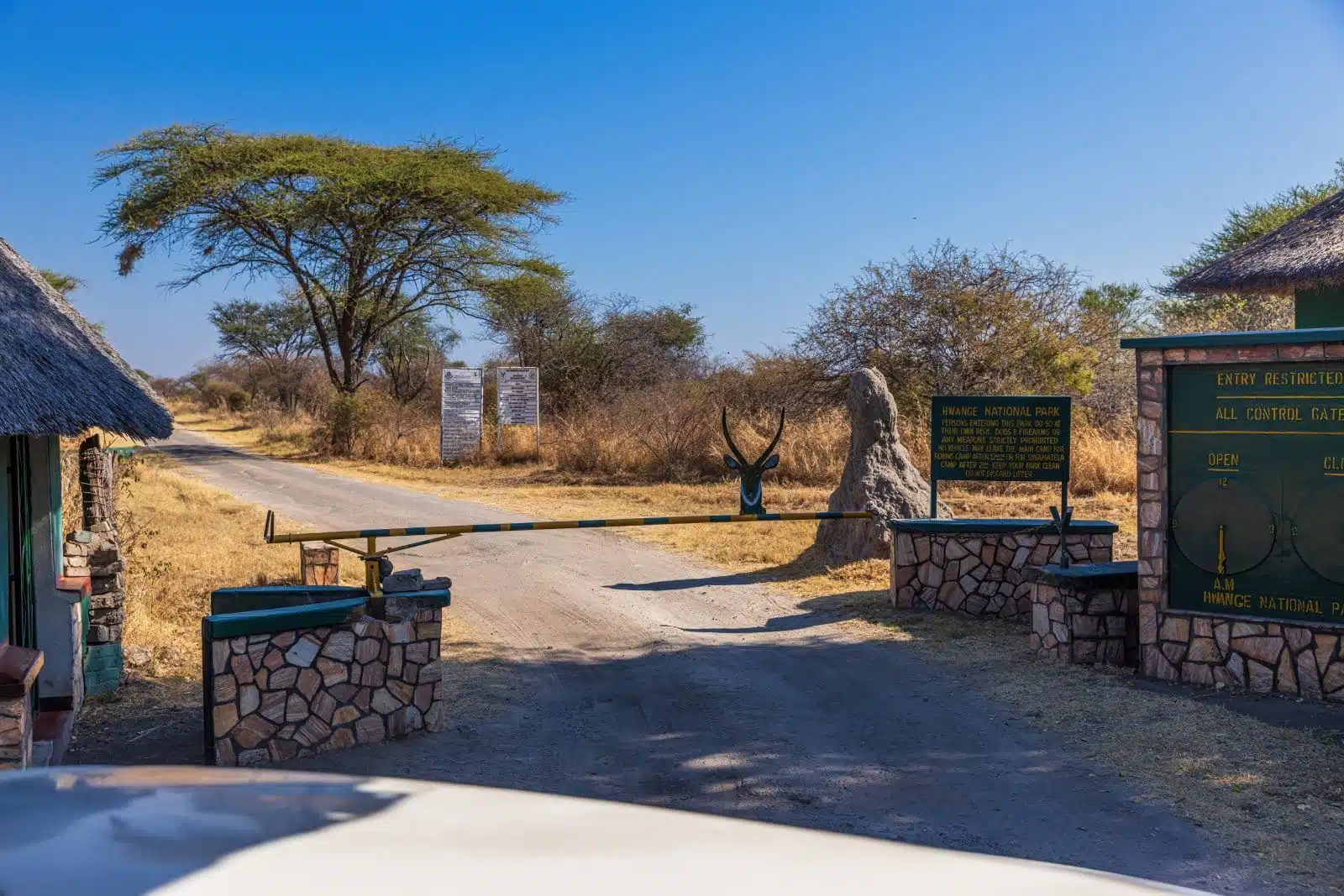
Image Credit: Shutterstock / Framalicious
While primarily focused on conserving African wild dogs, Painted Dog Conservation in Hwange National Park, Zimbabwe, also engages in lion research and conservation. The interconnectedness of predator dynamics in the park offers a comprehensive view of conservation that also benefits lions. Visitors can learn about the challenges of conserving multiple predator species, participate in anti-poaching patrols, and engage in educational programs that promote coexistence between wildlife and local communities.
Insider’s Tip: Visit the Conservation Education Center to learn about the importance of all predators within the ecosystem, including lions, and how they contribute to biodiversity.
When to Travel: The dry season from July to October is ideal for observing a wide range of wildlife, including lions.
How to Get There: Fly into Victoria Falls Airport and drive to Hwange National Park, or take a charter flight directly into the park.
8. Namib Desert, Namibia – Desert Lion Conservation
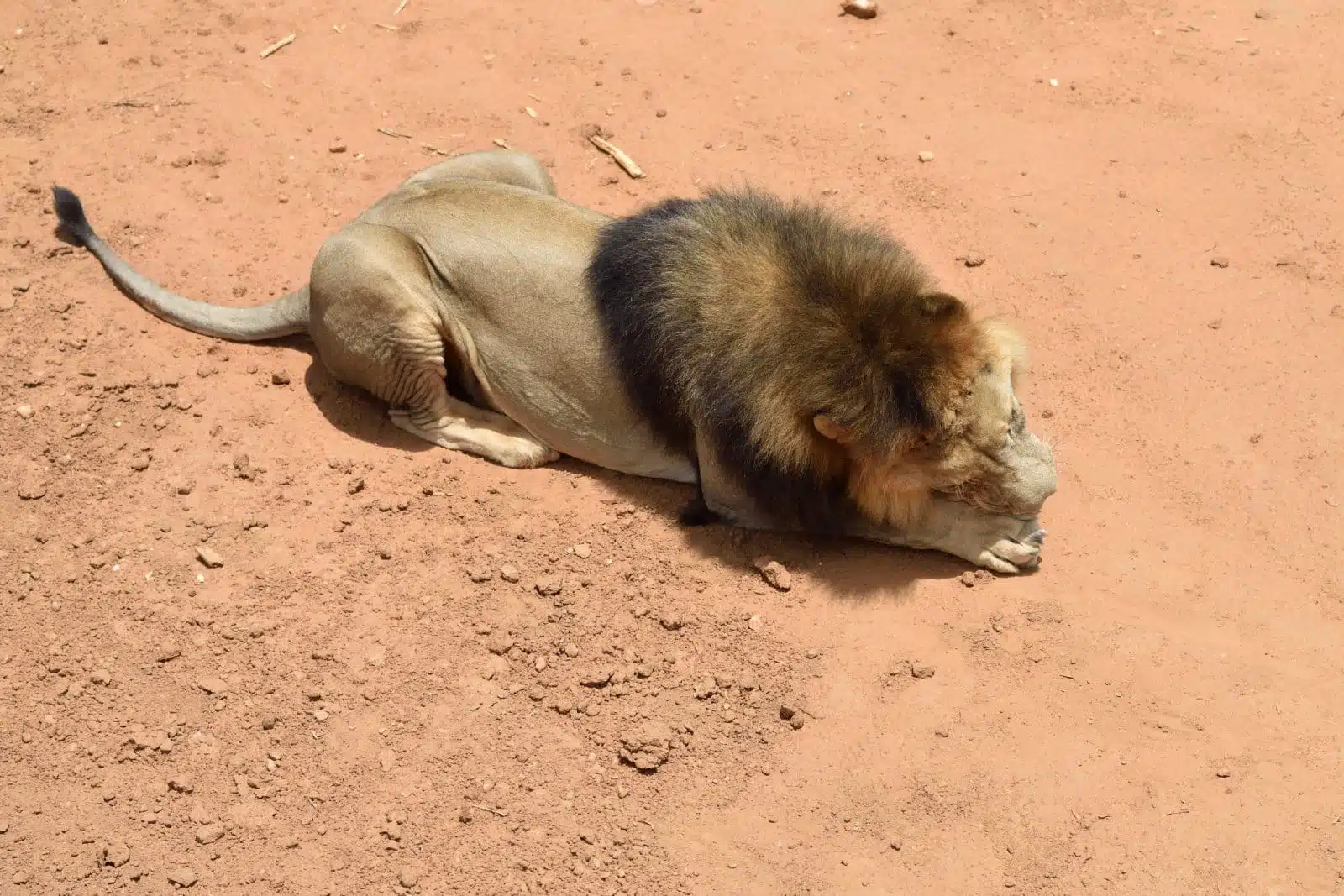
Image Credit: Shutterstock / Oleg Znamenskiy
The Desert Lion Conservation project focuses on the unique population of lions that have adapted to the harsh conditions of the Namib Desert. This initiative aims to track and study desert-adapted lions, mitigate human-wildlife conflict, and promote sustainable coexistence. Visitors can join expeditions into the desert to track lions, learn about their adaptation strategies, and understand the challenges of conserving wildlife in extreme environments.
Insider’s Tip: Prepare for the desert environment with appropriate clothing, sun protection, and hydration. The experience of tracking lions in the desert is unparalleled but requires proper preparation.
When to Travel: The cooler months from May to September offer the most comfortable conditions for desert expeditions.
How to Get There: Fly into Windhoek, Namibia’s capital, and take a domestic flight or guided tour to the Namib Desert region.
9. Niokolo-Koba National Park, Senegal – West African Lion Project
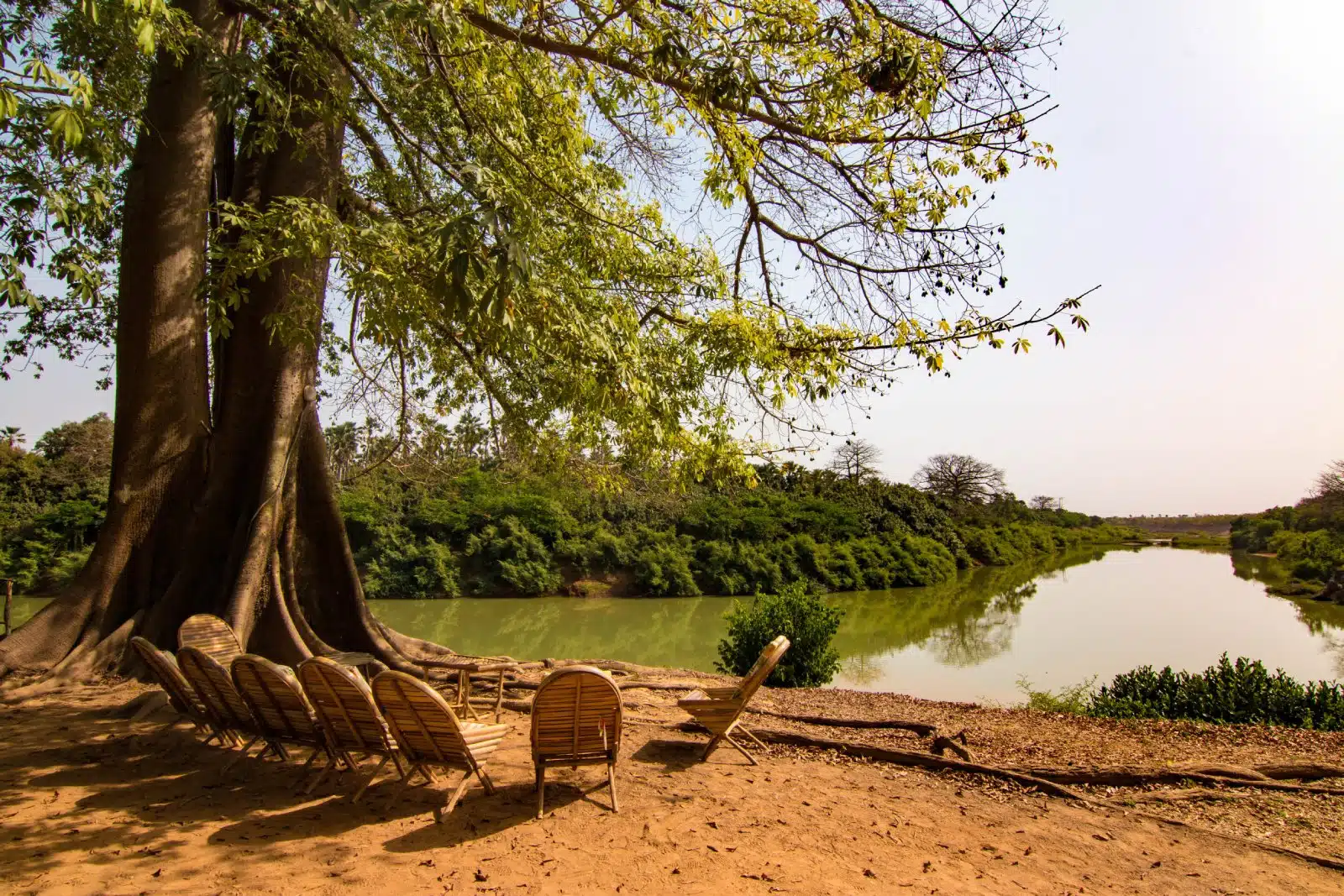
Image Credit: Shutterstock / evenfh
Niokolo-Koba National Park in Senegal is part of the West African Lion Project, aimed at conserving one of the most endangered lion populations. This project focuses on habitat protection, community engagement, and research to ensure the survival of West African lions. Visitors can explore the park’s diverse ecosystems, participate in lion monitoring activities, and learn about the cultural significance of lions in West African societies.
Insider’s Tip: Take the opportunity to explore the park’s other biodiversity, including elephants, leopards, and a variety of bird species, to understand the ecosystem’s complexity.
When to Travel: The dry season from November to May is the best time for wildlife viewing in the park.
How to Get There: Fly into Dakar, Senegal, and take a domestic flight or drive to Niokolo-Koba National Park.
10. Ruaha National Park, Tanzania – Ruaha Carnivore Project
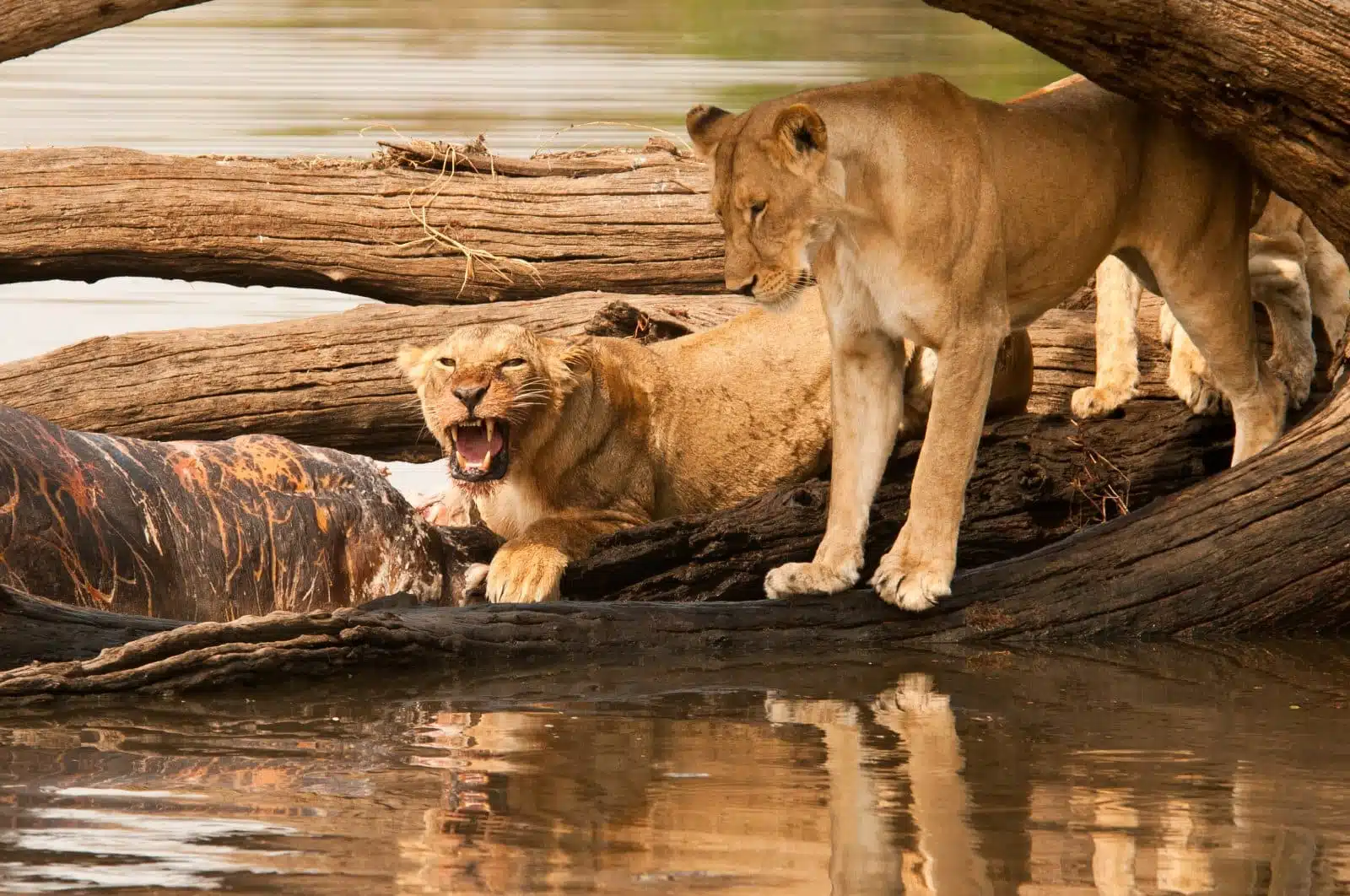
Image Credit: Shutterstock / Andrew Molinaro
Ruaha National Park, part of the larger Ruaha ecosystem, is critical for lion conservation in East Africa. The Ruaha Carnivore Project mitigates human-wildlife conflict, researches lion populations, and engages local communities in conservation efforts. Visitors can join the project team in the field, gaining a deep understanding of the challenges facing lions and the innovative solutions being implemented to protect them.
Insider’s Tip: Engage with local communities through the project’s outreach programs to see the impact of conservation on improving livelihoods and reducing conflicts.
When to Travel: The dry season from June to October is the most favorable time for wildlife viewing and accessing remote parts of the park.
How to Get There: Fly into Dar es Salaam and take a domestic flight to Ruaha National Park.
The Bottom Line
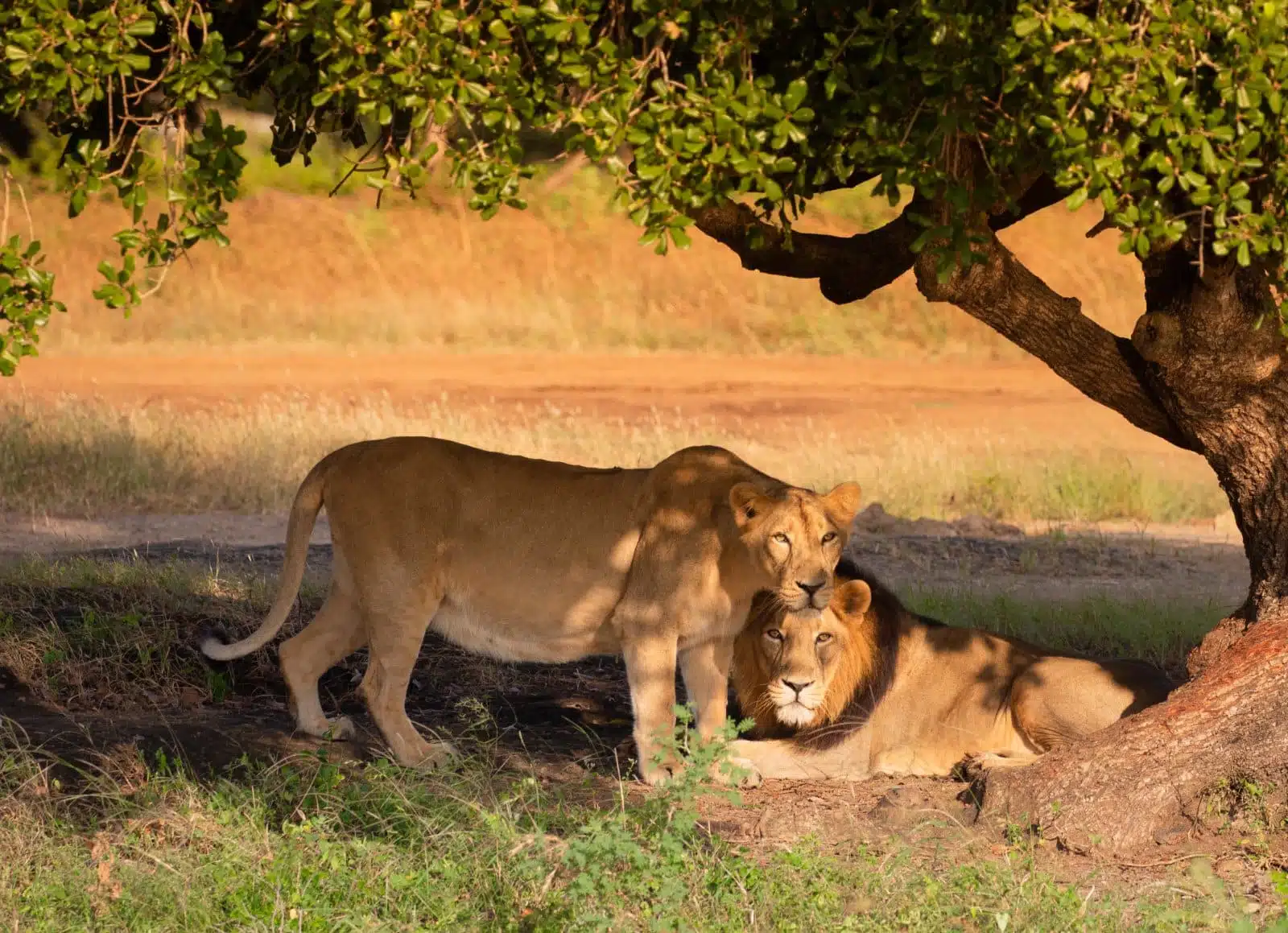
Image Credit: Shutterstock / Kaushik Ghelani
Embarking on a journey through Africa’s heartlands to engage with lion conservation contributes to preserving one of the continent’s most iconic species. “Living with Lions” offers a unique blend of education, participation, and exploration, providing travelers with a profound understanding of the importance of lion conservation. By choosing to be part of these conservation experiences, you ensure that future generations will still have the opportunity to witness the majesty of lions in the wild. Let this guide inspire you to take action, support conservation efforts, and advocate for protecting Africa’s wildlife heritage.
More From The Green Voyage
Top 10 Trending Travel Destinations 2024
6 Essential Banking Apps for International Travel – Managing Your Finances on the Go
Traveling With Kids – 10 Tips to Create Memorable Family Holidays
The post 10 Lion Conservation Experiences in Africa’s Heartlands 2024 first appeared on The Green Voyage.
Featured Image Credit: Shutterstock / Thomas Retterath.
For transparency, this content was partly developed with AI assistance and carefully curated by an experienced editor to be informative and ensure accuracy.
Tips for Trip Success
Book Your Flight
Find an inexpensive flight by using Kayak, a favorite of ours because it regularly returns less expensive flight options from a variety of airlines.
Book Your Hotel or Special Accommodation
We are big fans of Booking.com. We like their review system and photos. If we want to see more reviews and additional booking options, we go to Expedia.
You Need Travel Insurance!
Good travel insurance means having total peace of mind. Travel insurance protects you when your medical insurance often will not and better than what you get from your credit card. It will provide comprehensive coverage should you need medical treatment or return to the United States, compensation for trip interruption, baggage loss, and other situations.Find the Perfect Insurance Plan for Your Trip
